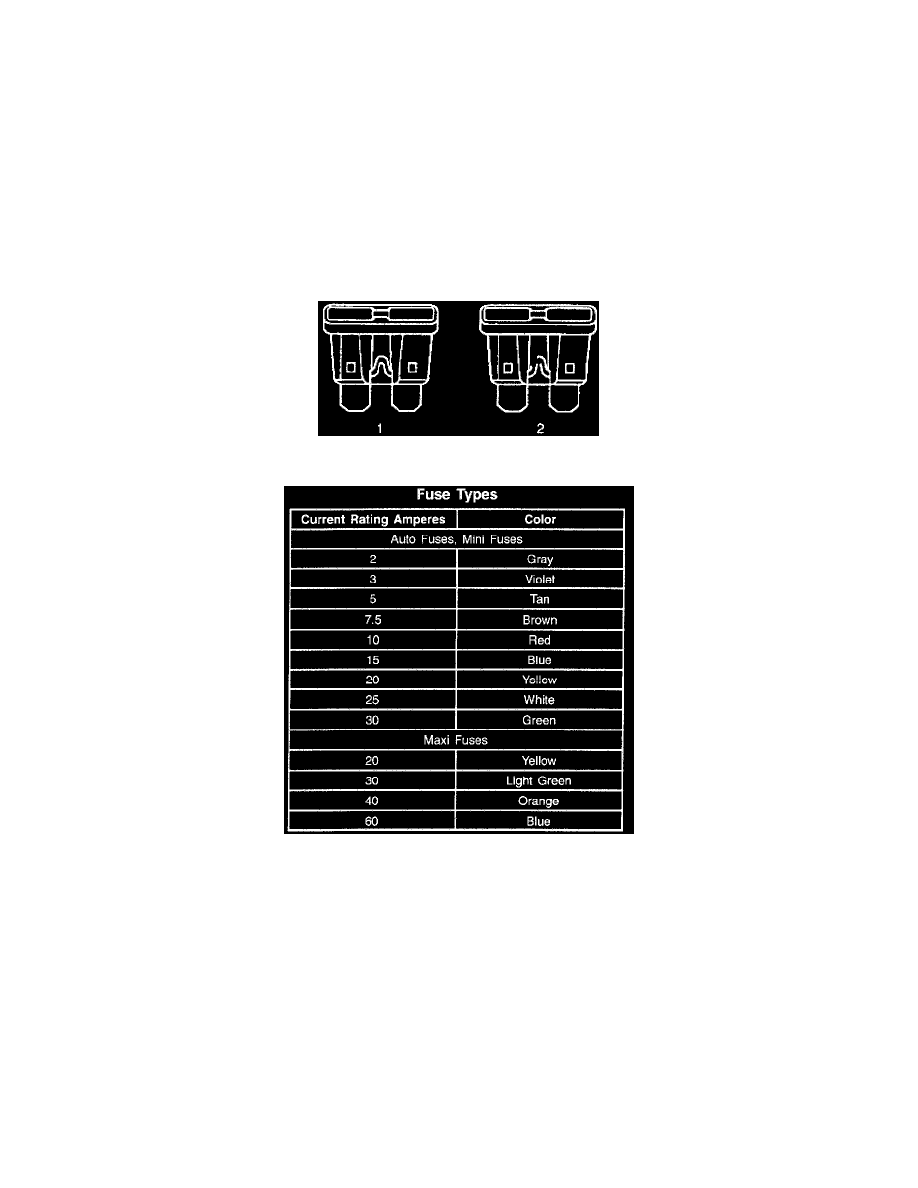Catera V6-3.0L VIN R (1997)

NOTE: A fused jumper may not protect solid state components from being damaged.
Circuit Breakers
A circuit breaker is a protective device that is designed to open the circuit when a current load is in excess of the rated breaker capacity. If there is a short
or other type of overload condition in the circuit, the excessive current will open the circuit between the circuit breaker terminals. Two types of circuit
breakers are used. The first is a circuit breaker. This type will open when excessive current passes through it for a period of time. It will close again after
a few seconds. If the cause of the high current is still present, it will open again. It will continue to cycle open and closed until the condition causing the
high current is removed. The second type of circuit breaker is a Positive Temperature Coefficient (PTC) circuit breaker. This type greatly increases its
resistance when excessive current passes through it. The excessive current heats the PTC device. As the device heats, its resistance increases. Eventually
the resistance gets so high that the circuit is effectively open. Unlike the ordinary circuit breaker, the PTC unit will not reset until the circuit is opened,
removing the voltage from its terminals. Once the voltage is removed, the circuit breaker will re-close within a second or two.
Fuses
Fuses
Fuse Types
The fuse is the most common method of automotive wiring circuit protection. Whenever there is an excessive amount of current flowing through a circuit
the fusible element will melt and create an open or incomplete circuit. Fuses are a "one time" protection device and must be replaced each time the
circuit is overloaded. To determine if a fuse is blown, remove the suspect fuse and examine the element in the fuse for a break. If the element is broken,
replace the fuse with one of equal current rating.
General
IMPORTANT: After you make any electrical repair, always test the circuit by operating the devices in the circuit. This confirms not only that the repair
is correct, but also that the cause of the complaint was correctly identified.
All electrical circuits are protected against excessive loads which might occur because of shorts or overloads in the wiring system. A fuse or circuit
breaker provides such protection. A short may cause a fuse to blow or a circuit breaker to open.
Pull-to-Seat Connector
